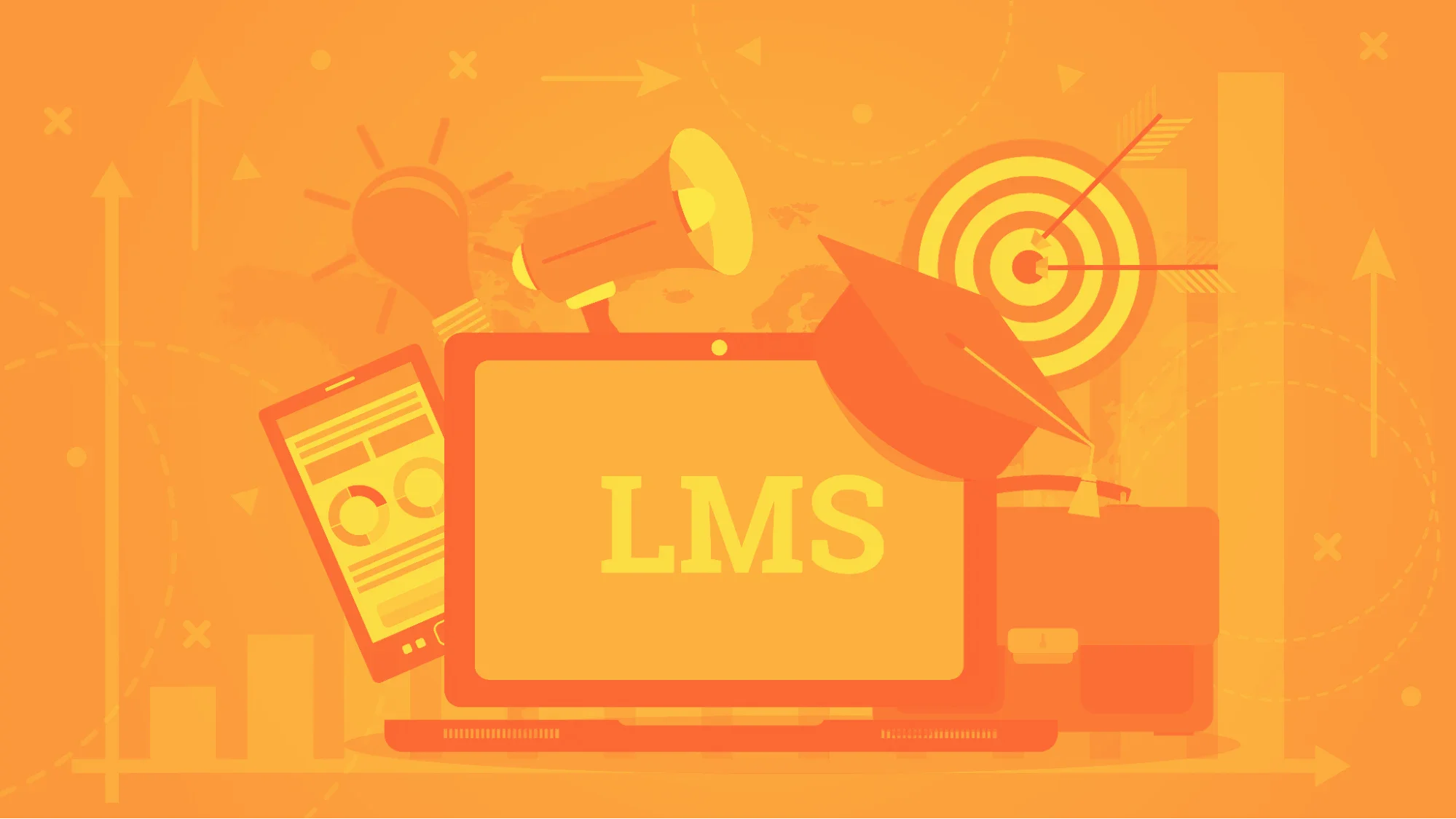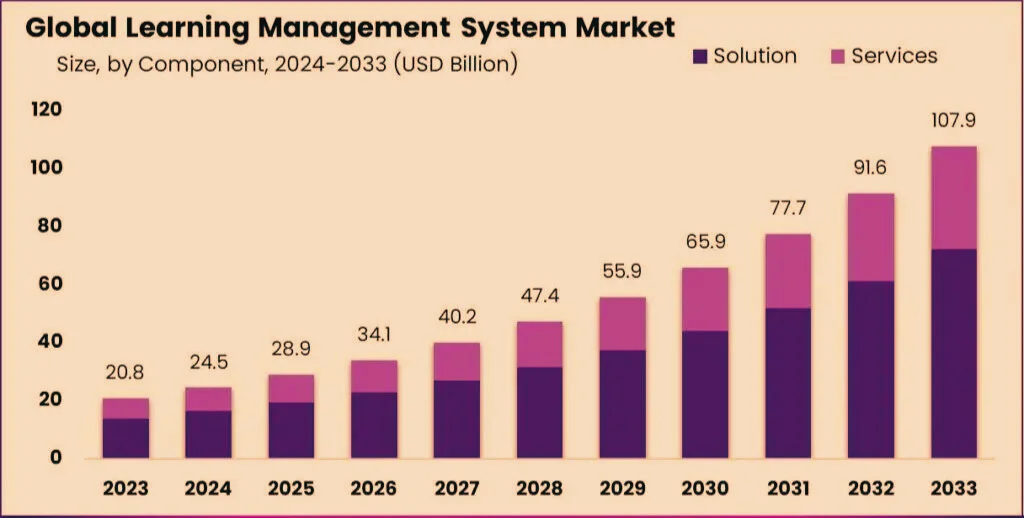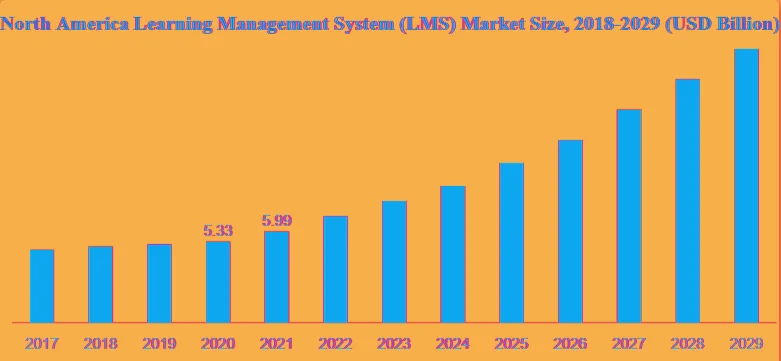
Update: This article was last updated on 6th January 2025 to reflect the accuracy and up-to-date information on the page.
Keep away from people who try to belittle your ambitions. Small people always do that, but the really great make you feel that you, too, can become great – Mark Twain

A learning management system (LMS) is a software application or web-based technology designed to plan, implement, and assess specific learning processes. It supports e-learning practices and typically consists of two main components: a server that handles the core functionality and a user interface (UI) for instructors, students, and administrators.
Moonpreneur
Content Creation and Delivery: Instructors use LMS to create and deliver content.
☑️ Monitoring and Evaluation: Instructors can monitor student participation and evaluate performance.
☑️ Interactive Features: Offers features such as threaded discussions, video conferencing, and forums for student interaction.
☑️ Enhancing Education: Enhances traditional educational methods while saving time and money.
☑️ Efficient Management: Facilitates efficient management of user registration, content delivery, calendars, communication, quizzes, certifications, and notifications.
☑️ Broad Usage: Widely used by businesses, government agencies, and educational institutions.
A study by Capterra revealed that 64% of the K-12 schools and 36% of the colleges and universities in the USA use LMS. This system is created to oversee the dissemination of educational materials.
The LMS may be independently installed on the company’s server or accessed through a cloud-based platform provided by the software company.
Benefits of using an LMS in various industries
Learning Management Systems play a crucial role in the design and development of eLearning. It particularly caters to a vast audience with a significant amount of course material to cover. For those uncertain about adopting a Learning Management System, here are several compelling reasons why every education expert needs to have an LMS system in place.
1. Organize eLearning content in one location
By compiling eLearning materials into a single location, you can avoid scattering them across various hard drives and devices. It mitigates the chances of losing crucial data and simplifies the process of developing your eLearning course. Additionally, if you use a cloud-based Learning Management System, all members of your eLearning team can access the information because it is stored on a remote server.
2. Provides unlimited access:
Upon uploading and publishing your eLearning course materials on the LMS, your audience can access the required information without limitations. Moreover, individuals who are always on the go can log in to the eLearning platform via their smartphones and tablets.
It allows them to develop skills and improve work-related tasks at any time without waiting for the next online training session. This is why having an LMS is crucial for global audiences across various time zones.
3. Learner progress and performance:
With a superior Learning Management System, you can monitor students’ progress and ensure they are meeting their goals. If an online learner cannot complete an eLearning scenario successfully, you can provide additional resources to enhance their performance or learning behaviors.
Reporting and analytics tools are typically included in most Learning Management Systems, enabling you to identify areas in your eLearning course that may require improvement.
4. Keeps organizations up-to-date:
A Learning Management System is an invaluable tool for organizations that must keep up with compliance regulations. Compliance laws frequently change, and updating traditional courses to reflect these changes can be time-consuming.
A corporate LMS can add new compliance standards to your online training course within minutes. It keeps your corporate learners informed of the latest compliance rules and avoids costly penalties for your organization.
5. Integrates social learning experiences:
Integrating social learning into your eLearning strategy becomes effortless with a Learning Management System. The LMS online allows you to incorporate links to Facebook and Twitter pages, LinkedIn groups, and online forums that benefit your learners.
Additionally, you can advertise your eLearning course on social media platforms to attract new learners and design eLearning exercises focused on peer collaboration.
Implementing learning management systems in education brings measurable outcomes beyond the classroom. Educators and organizations benefit as LMS platforms streamline operations and enhance learning efficiency, leading to significant returns on investment (ROI).
1. Increased Productivity
Learning management systems in education enable instructors to automate repetitive tasks, such as grading and attendance tracking, freeing up time for more strategic activities like lesson planning and personalized student engagement. In corporate environments, employees gain quick access to training materials, which reduces downtime and boosts productivity.
2. Cost Efficiency
LMS systems cut out the costs of materials and time spent on face-to-face training, thus saving an institution plenty of money. Schools as well as businesses can save costs incurred in travel, printing, and venue booking and still deliver quality training to all their students.
3. Scalability
Education-based learning management systems provide unparalleled scalability. Be it for the increase in students or to bring on new employees at the offices of global corporations, an LMS can scale to increase demand without extra costs.
4. Improved Learning Outcomes
Progress monitoring, instant feedback, and customization of learning paths help ensure better outcomes for both students and employees. The resulting improvement in performance is followed by increased satisfaction levels, thereby decreasing churn rates both in educational and corporate institutions.
5. Long-Term Knowledge Retention
Through analytics, gamification, and microlearning modules, an LMS provides the learner with the ability to retain information longer. This can mean a better-skilled workforce for an organization or better academic success for the educational institution.
LMS are used in broad applications, from educational institutions to corporations, and mainly for knowledge management (KM). KM is defined as gathering, organizing, sharing, and analyzing an organization’s knowledge in terms of resources, documents, and people skills.
However, the specific use of an LMS varies according to the organization’s training strategy and goals.
Some of the most popular LMSes in the educational sector are Moodle, Blackboard Learn, and Schoology. Enterprise-level LMSes are Adobe Captivate Prime, Docebo LMS, TalentLMS, iSpring Learn, and eFront.
LMSes in a corporate setup are mainly applied for employee training, onboarding, and development to ensure the employees have good job skills and are aware of product changes.
It can also help an organization maintain current knowledge through new product and compliance training. The LMS can be used in extended enterprise for training customers, partners, and members to build up customer experience and brand loyalty.
Education is the most powerful weapon which you can use to change the world – Nelson Mandela

Depending on your organization, you choose either type of LMS. Here are the different types of LMS that can be used in different industries:
✔️ Cloud-based LMS: LMSes that are cloud-based are hosted on the cloud and commonly follow a SaaS business model. Users can access the system from any location, anytime, by using their username and password.
✔️ Self-hosted LMS: The self-hosted LMS requires users to download the software and offers more customization options. It requires the user to maintain and update the system independently. In contrast, cloud-based LMSes follow a software-as-a-service (SaaS) model, and the vendor is responsible for system maintenance and updates.
✔️ Desktop application LMS: LMSes in desktop applications are installed on the user’s computer but can still be accessed from multiple devices.
✔️ Mobile application LMS: Mobile LMSes enable users to access their online learning materials anytime and anywhere through mobile devices, making it a flexible platform for mobile learning.

The Learning Management System (LMS) market is experiencing substantial growth, driven by the rising adoption of digital learning solutions in both educational institutions and the corporate sector. Here is the graphical data provided by market.us
Learning management systems have progressed significantly within education due to advancing technology landscapes. These are impacting the very modes of operation through which instructors as well as students collaborate, ensuring greater engagement and interactivity of learners with more efficient learning in place.
1. AI-based Personalization
Artificial intelligence is transforming learning management systems in education. Adaptive learning paths are enabled because AI analyzes performance and tailors content to fit individual needs. Thus, all learners progress at their own pace, with struggling students receiving additional resources and advanced learners being challenged by more complex materials.
2. Gamification for Enhanced Engagement
Gamification elements, such as badges, leaderboards, and interactive challenges are starting to be incorporated in the learning management systems in education. They make the learning process fun for the students and motivate them to achieve their goals.
3. Use of AR/VR for Immersive Learning Experience
Using simulations immersed in 3D environments brings to students topics otherwise abstract, even impossible for direct access by them. Using this tool students could visualize more effectively exploring within the human body during biology studies or visiting important historical events, during history study.
4. Mobile-First Learning
Mobile learning management systems are also being embraced by education since the use of mobile devices keeps on increasing. Such systems provide access to learners’ needs, meaning they can study anywhere, at any time, using their smartphone or tablet.
5. Microlearning Modules
Learning management systems in education now embrace the microlearning modules because it caters to bite-sized learning. These short focused lessons help the learner understand difficult concepts quickly and retain information.
By adopting these future-ready trends, learning management systems in education are becoming indispensable tools for educators and institutions aiming to provide high-quality, modern learning experiences.
The LMS core functional platform represents the most elementary level and merely allows the upload of learning material by the administrator. The potential for an LMS in performing a range of tasks on the school’s side without manual implementation, such as delivering lessons to students, sending notifications, or sharing data with authorized users, is significant.
Typically, an LMS is accessed through a web browser and requires secure sign-on credentials, granting students and instructors convenient access to courses from anywhere. Meanwhile, administrators and leaders can monitor student progress and identify areas for improvement.
Overall, it won’t be wrong to say that LMSes have become an integral part of various sectors such as tech, fintech, the corporate world, and so on. It is high time you acquaint yourself with more knowledge regarding LMS and its operations.
The innovator is all set to change the face of traditional education to future-proof the next generation of holistic learning solutions. Its innovator program is helping build tomorrow’s workforce by equipping students in AI/ML, Robotics, Coding, IoT, and Apps. This is about encouraging entrepreneurship through experiential learning.
Recommended reading:
☛ Montessori vs. Traditional Education: Finding the Perfect Fit for Your Child
☛ Play And Learn Engineering Educational STEM Games
☛ The Real-World Impact of Educational ☛ Assessments: What Matters Most?
☛ Interesting Science Experiments Your Children Can Try
























Are there any downsides to LMS?
While beneficial, LMS can have limitations:
Technology Reliance: Successful use requires access to reliable technology.Technical Challenges: Learning how to navigate the system may take some time.Potential for Overwhelming: A poorly designed LMS might present information overload.Overall, LMS are powerful tools that can enhance the learning experience for both instructors and students.